Hitachi had, since the mid-90’s, always been a fairly large player in the 2.5″ hard drive market, this drive demonstrating one of their often forgotten pre-IBM architectures. The DK228A-65 was released in May of 1998, featuring a first for Hitachi: a drive utilising GMR heads.
Providing a recording capacity per-platter of roughly 30% more than MR-type predecessors, this drive managed a whopping 13MB/s peak in performance. A measly figure to what many are used to today, with average speeds being much less. However, any drive holding up for 25 years is something to admire.

Drive Attributes ------------------------------------- Hitachi DK228A-65 ------------------------------------- Capacity 6.48GB Mfc Date 1998 Format 2.5" Height 12.5mm Interface PATA Platters 3 Heads 6 Cache 512KB RPM 4200 CHS 8968/6/512 (translated) Origin Philippines (HCP) -------------------------------------
Boasted by Hitachi as a large capacity slim format drive, the company managed to provide a density of 2.16GB per platter. While three platters within a 12.5mm space isn’t groundbreaking in this day and age, back in the late 90’s it wasn’t a fully matured concept for all manufacturers.
As Hitachi still have a press release available for this drive, the full drive specifications are shown in the table below [1]:
| Specifications | Model: DK228A-65 |
|---|---|
| Capacity (formatted) | 6.48GB |
| Sector Capacity | 512 Bytes |
| Disks | 3 |
| Heads | 6 |
| User cylinders | 8968 |
| Seek time (nominal) | Average: 12ms Maximum: 24ms Minimum: 3ms |
| Average rotational latency | 7.1ms |
| Rotation speed | 4,200 RPM |
| Linear bit density, maximum | 250.5 kBPI |
| Track density | 15.6 kTPI |
| Recording technology | EPRML, ID-less format |
| Interface | ATA-4 (IDE) |
| Media data transfer rate | Center>8,61 to 13.43 MB/s |
| Interface data transfer rate | Maximum: 16.6MB/s (PIO Mode 4, DMA 2) Maximum: 33.3 MB/s (Ultra DMA 2) |
| Data buffer size | 512kB |
| Spin-up time | Power-on: 5s (20s max) Standby: 3s (20s max) |
| Dimensions (WxDxL) | 70 x 100 x 12.7 (mm) |
| Weight (typical) | 130g approx |
| Power | +5.5v, 5% tolerance Typical draw: Start-up: 0.9A Idle: 0.19A Seek: 0.48A Read/Write: 0.46A Stand-by: 0.05A Sleep: 0.02A |
| Energy consumption rate | 0.00015 W/MB |

This drive was manufactured in the Philippines, a factory created by Hitachi Computer Production (Asia) Ltd in 1994, being the first major hard drive corporation to enter the Philippines since the country’s financial recession in 1993. Unlike NEC who had used subcontractors in the country a few years before, this would be the first fully-owned plant from any drive manufacturer located in the nation. [2] (if you wish to gain a comprehensive hard drive history lesson with regards to the Philippines, mostly dealing with Japanese manufacturers, I highly recommend checking out this source!)
As with most pre-IBM Hitachi drives, the label structure leaves a lot to be desired. The label lacks date codes, capacity information and input parameters. Fortunately, their acquisition of IBM’s disk drive division would improve this drastically post-2002.
If you’re curious, I’ve created a post going over how Hitachi’s pre-IBM drive model numbers can be decoded. Feel free to take a read, if you wish.
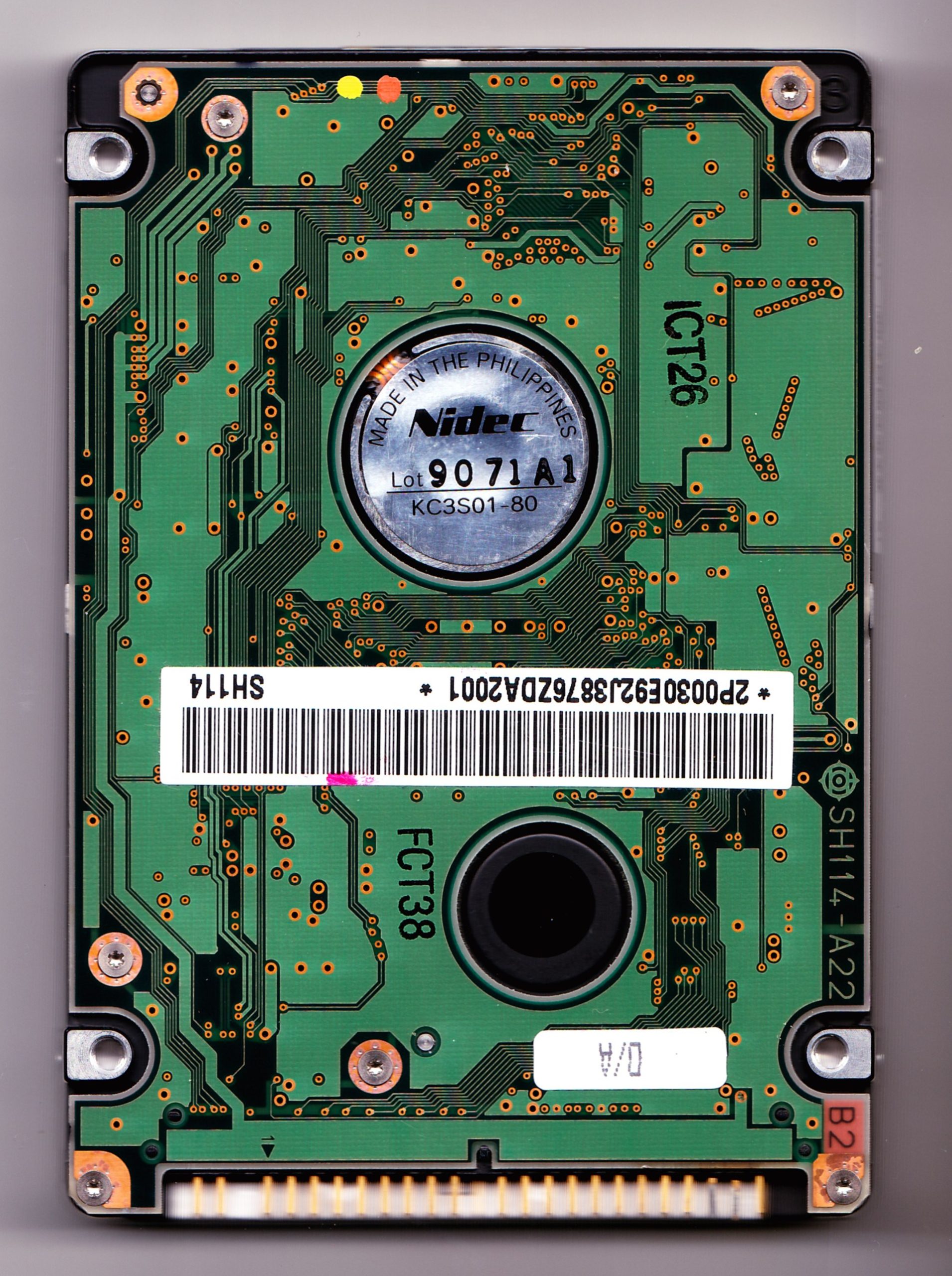

Certainly an unassuming logic board, again lacking any date indications.
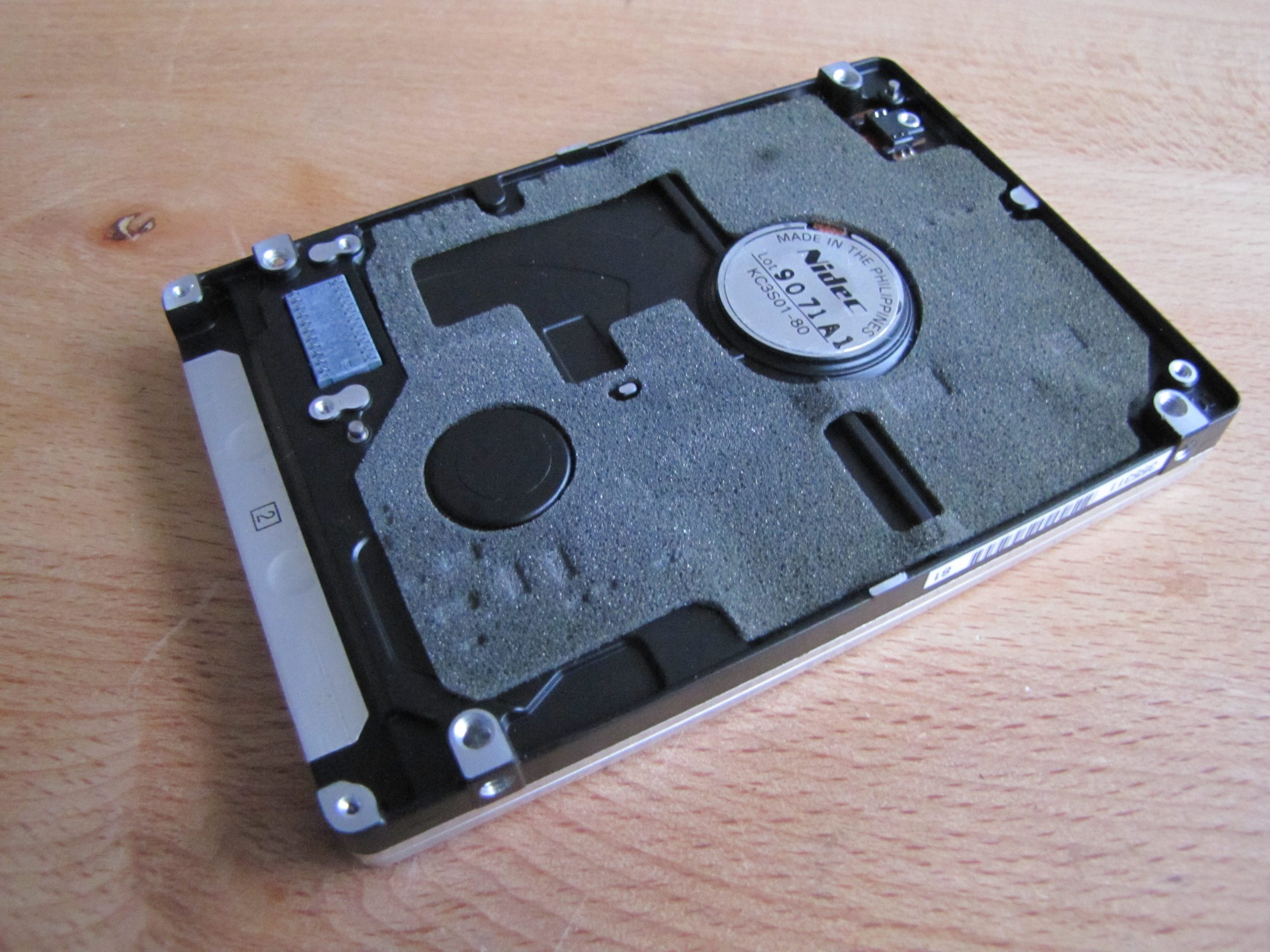
There’s some foam as usual, alongside the head-stack connection array.
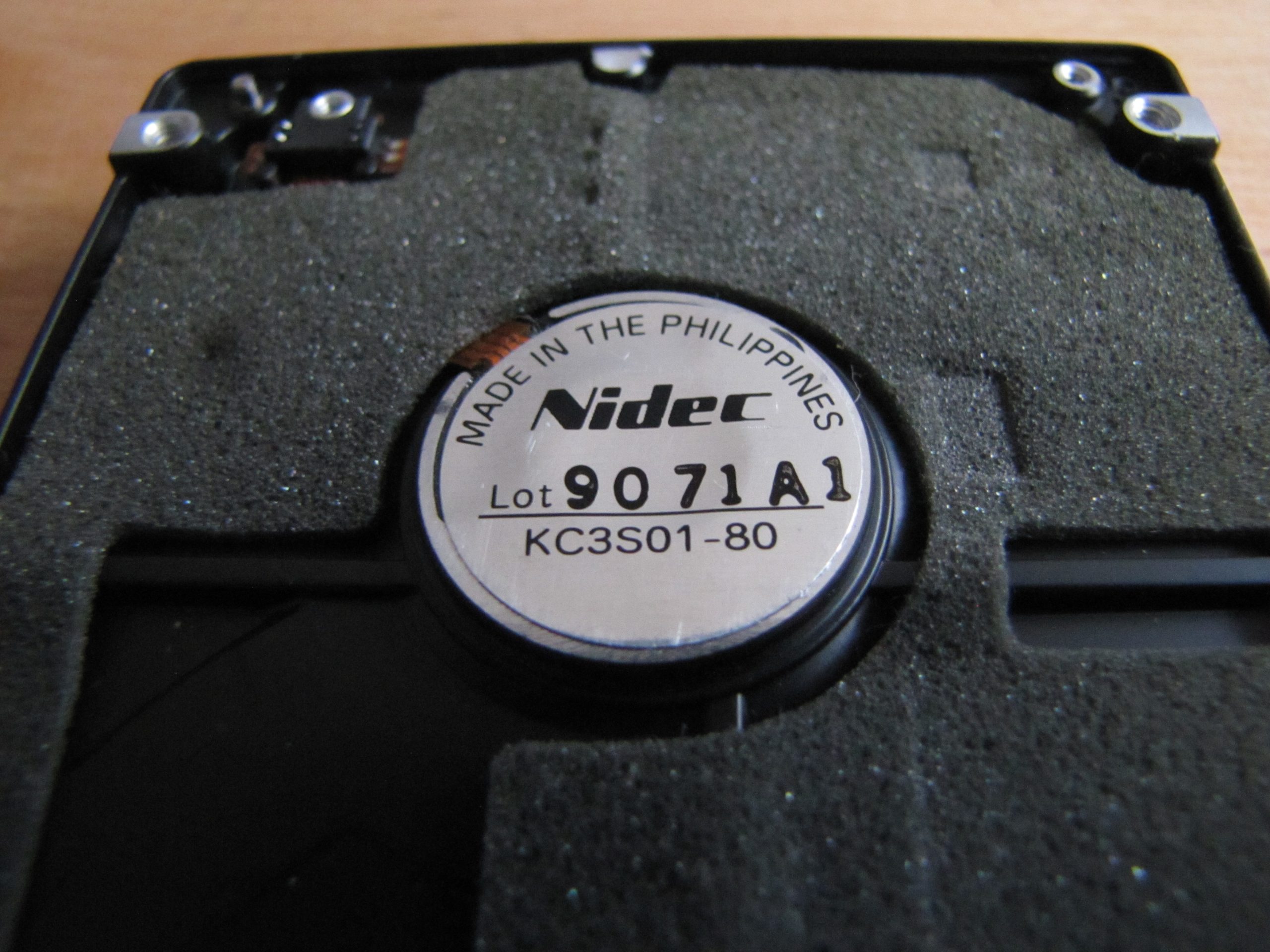
While most 2.5″ drives of the period hide their spindle motor supplier of choice, this one is clearly a Nidec.

There’s a few things to discuss, as shown below.
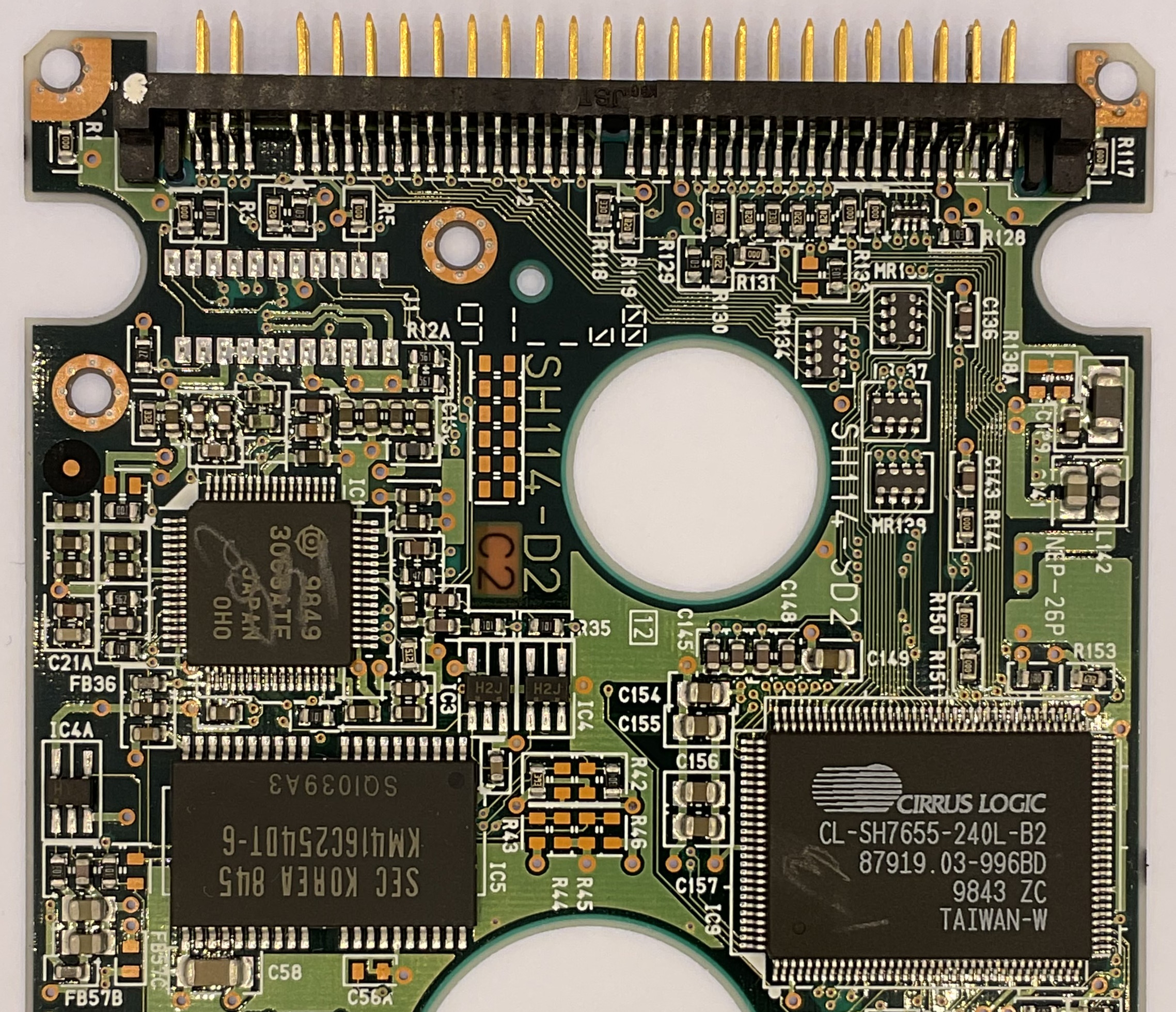
The only date indication on this board is from the Hitachi motor controller IC, printed as coming from week 49 of 1998, alongside the Cirrus Logic interface IC, printed as coming from week 43 of 1998. The final IC here is undated, being 512KB of cache/buffer memory, manufactured by Samsung.
While PCB finalisation usually occurs several months prior to final drive assembly, this is heavily dependant on supply chains in the end. It’s unknown whether or not the base of this drive is from late 1998 or early 1999. In the end, it doesn’t matter too much.

The microcontroller is a native Hitachi unit, with flash memory supplied by Fujitsu. Such is how a 2.5″ drive from this era comes together.
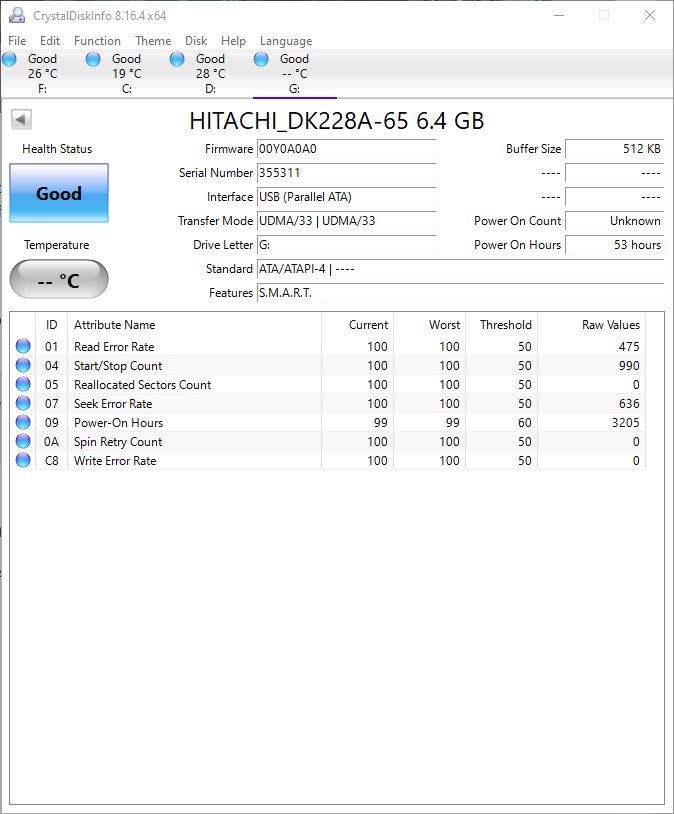
This drive does support smart, but it’s expectedly rudimentary. Nonetheless, it shows no issues are currently detected, which matches with this drive having a perfectly clear surface scan. Neat.
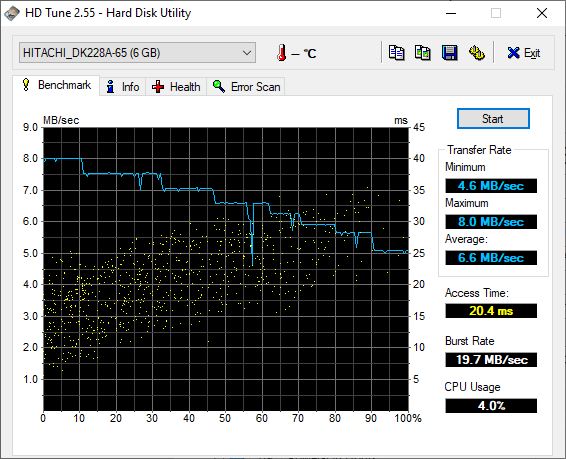
A simple benchmark via HD Tune v2.55 provides a good-enough picture for what to expect with one of these. Average performance is roughly half of Hitachi’s buzz-tastic 13.4MB/s peak performance figure, alongside this one only managing 8MB/s peak. The dip at 57-58% transfer completion is a consistent quirk of Hitachi’s earlier firmware revisions, which have an insistence with error checking or miscellaneous firmware verification at specific intervals.
As per Hitachi’s press release, samples of this model were available for over €800 ($880/£735) in today’s money, not accounting for inflation. This was a fairly impressive “slim” 2.5″ drive for the time, but its impressive feat made it to be a reasonably high end offering compared to most models in the same period.
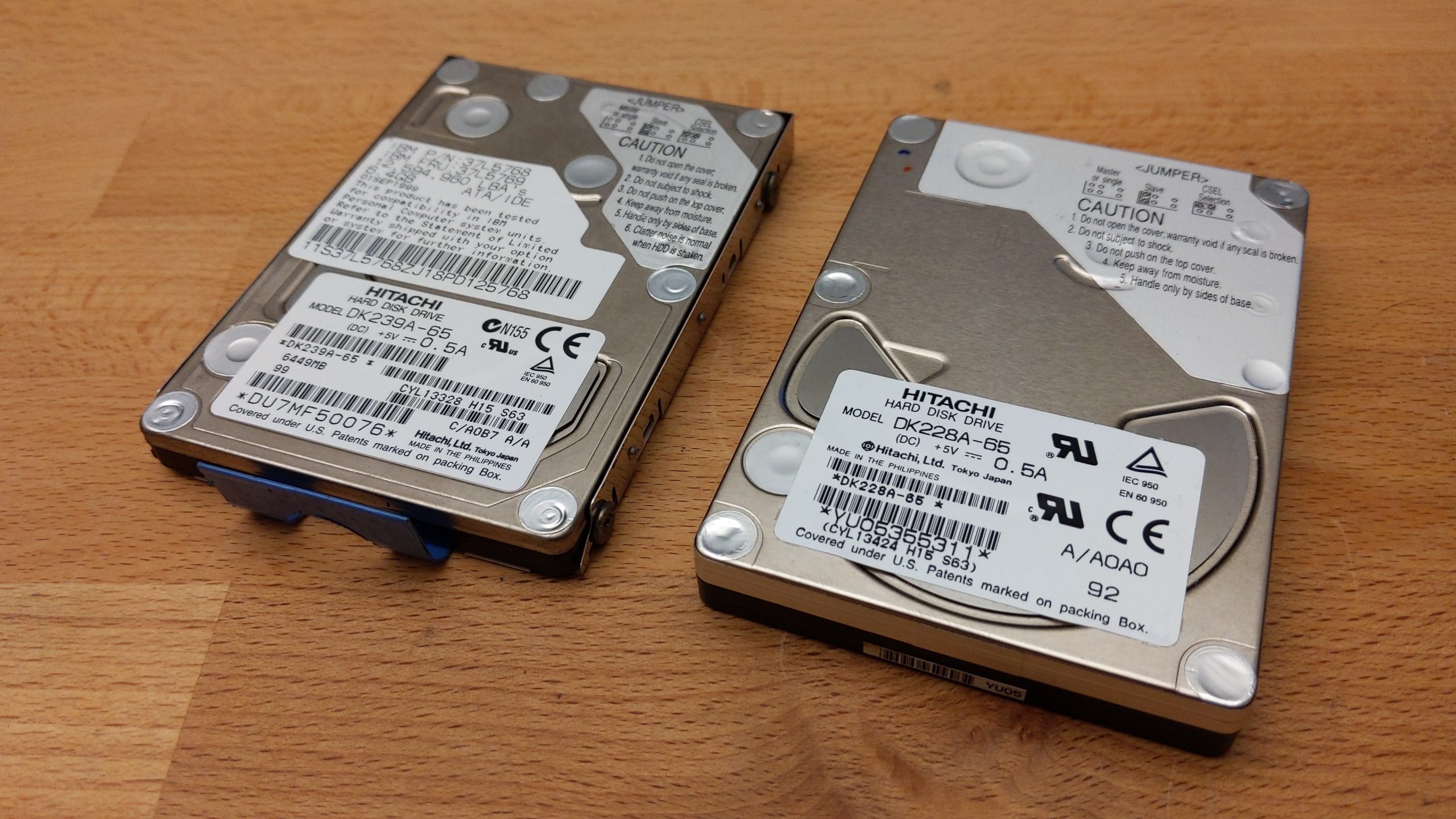
The DK228A-65 would end up being quickly surpassed with the DK239A-65 only six months later, bringing height down to just 9.5mm with the same overall capacity limit. This increased the total 6.48GB capacity to a 2-platter configuration, therefore increasing both platter density alongside overall performance as a result. Perhaps the DK228A-65 would end up having a shorter product lifecycle as a result of the capacity boom in the late 90’s, but it’s clear they continue to plod along, even today.
Hitachi’s native 2.5″ drive architecture production would come to an end post-IBM buyout, with the DK23FA-80 at 80GB as the highest-end final design example from the Philippines, as Hitachi favoured IBM’s Travelstar line-up offerings. What became of Hitachi’s IP from the region remains unclear, aside from 1.8″ drive production, but one would expect it wasn’t entirely forgotten with certain elements of future Travelstar design. Curiously, Hitachi re-used this IP for Endurastar’s up into the early 2010’s for 2.5″ models (e.g. HEJ425040F9AT00), but these were also made in ex-IBM’s factory in Thailand. Perhaps Hitachi had more faith in their long-term design for more robust purposes, as opposed to IBM’s untried designs in the space.
We’ll never know where Hitachi would have ended up, had their fate not intertwined with IBM.
If you missed the video I made on this drive, you can find it here:
References:
[1] Hitachi Ltd. (1998), May 13th 1998, Hitachi Releases 2.5″ HDD with Giant Magnetoresistive Heads for Notebook PC, Published by Secretary’s Office – Hitachi Ltd., Acquired from: https://www.hitachi.com/New/cnews/E/1998/980513B.html
[2] G. R. Tecson, School of Economics, University of the Philippines, The Hard Drive Industry in the Philippines, Acquired from: https://escholarship.org/content/qt0sh085cn/qt0sh085cn_noSplash_3a182fa772ebae1df4cdd70be948d4ad.pdf, Downloadable mirror: Hard Drive Industry in the Philippines